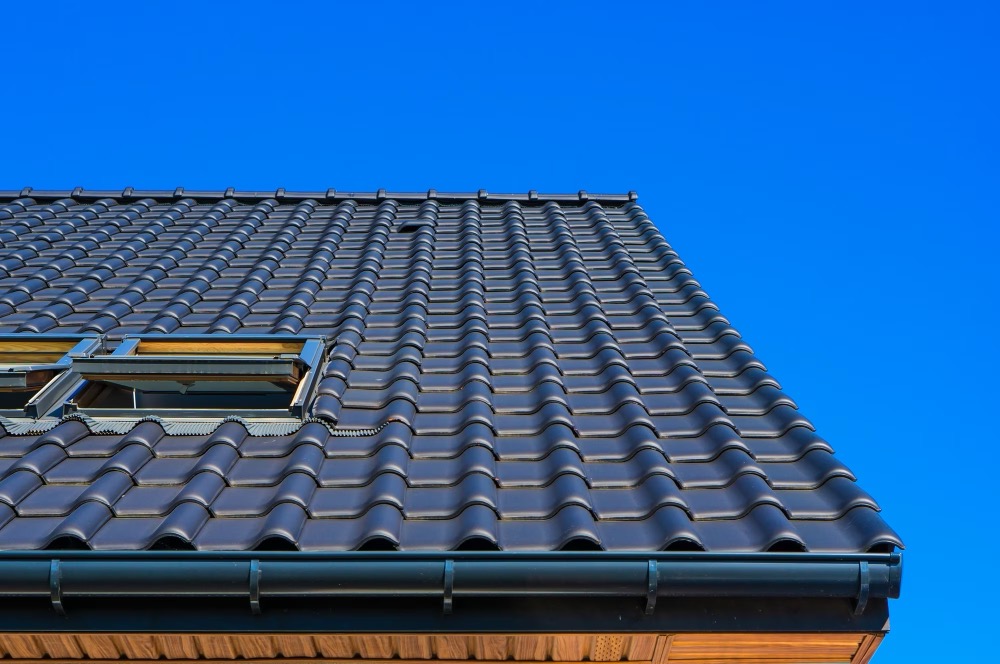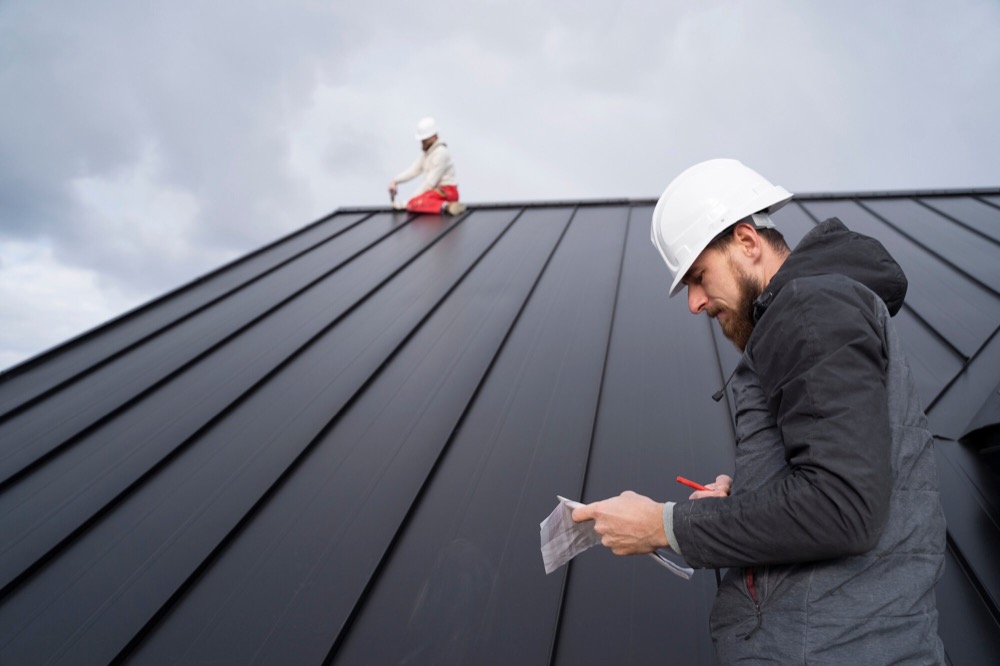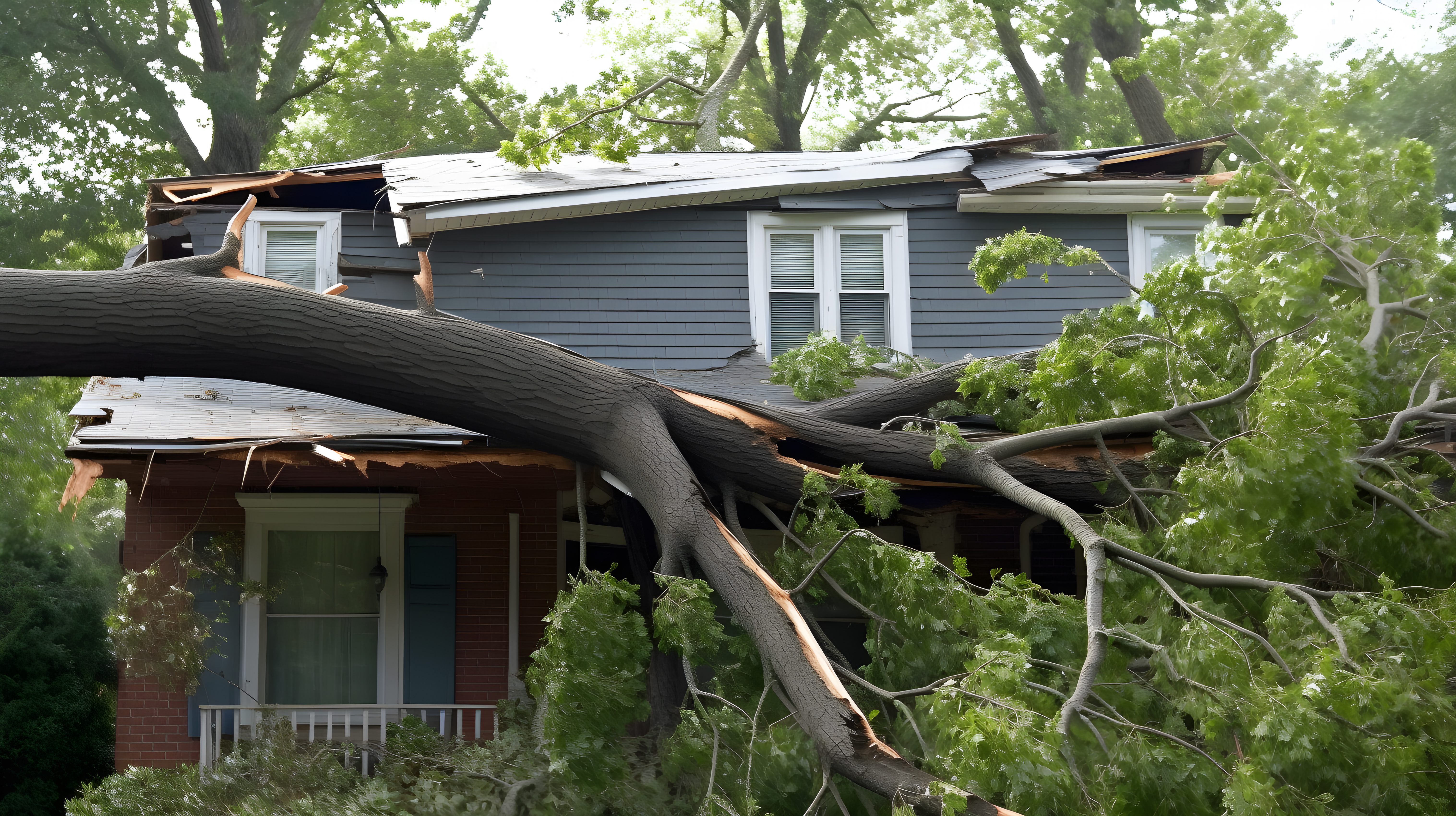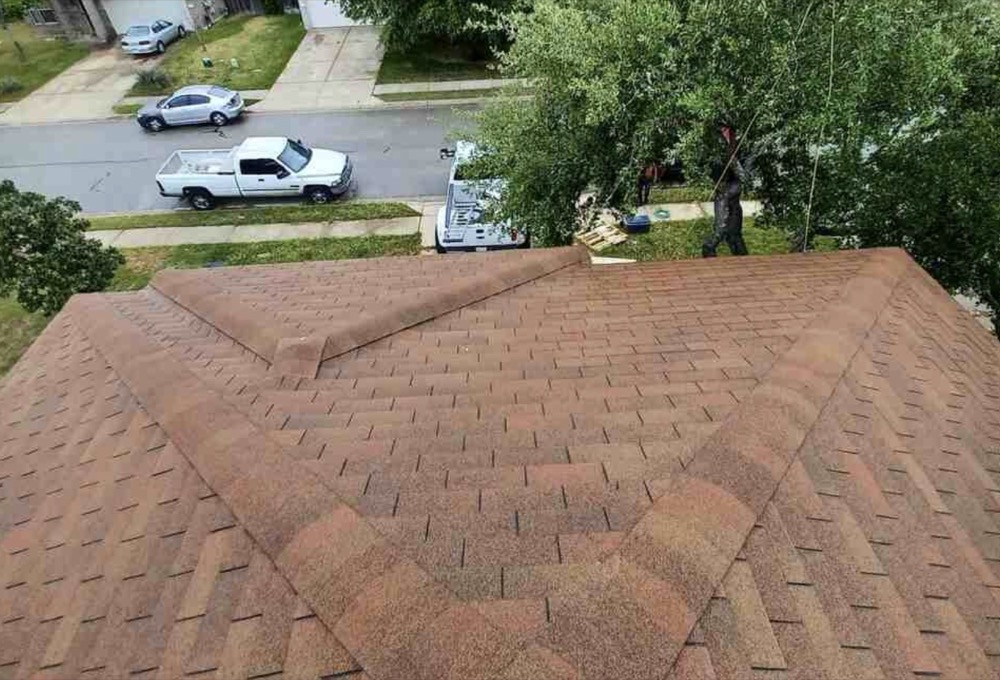What to Anticipate During the Roof Installation Process
Intro
When it comes to maintaining your home, one of the most important aspects to consider is the condition of your roof. Whether you are in need of a completely new roof or simply a repair, understanding what to anticipate during the roof installation process can help you feel more prepared and informed. From choosing the right materials to selecting a trustworthy contractor, there are several key factors to consider when undergoing a roof installation. In this blog post, we will break down the various steps involved in the roof installation process, so you know exactly what to expect.
Understanding the Basics of Roof Installation
Embarking on a roof installation journey marks the beginning of revitalizing your home's exterior and fortifying its protection against the elements. This critical home improvement project encompasses more than just overlaying new materials atop your house. It starts with an in-depth evaluation of your existing roof's condition to unveil any underlying issues that could impact the new installation's integrity and longevity. A professional roofing contractor conducts this inspection, meticulously examining for signs of wear, damage, or structural concerns that need addressing.
Following the assessment, the actual process of roof installation unfolds. This entails a systematic removal of the old roofing materials, a step essential for preventing future complications and ensuring a solid foundation for the new roof. Subsequent to the removal, the roofing team will repair or replace any damaged underlayment or structural components, setting a robust stage for the installation of new roofing materials.
The choice of roofing materials plays a pivotal role in this process, influenced by a myriad of factors including climate, architectural style, and personal preferences. Modern roofing technology offers a diverse palette of materials, each with unique advantages. Whether opting for the traditional charm of asphalt shingles, the durability of metal, or the aesthetic appeal of tile, the selection should align with the homeowner's objectives and the home's structural requirements.
Installation techniques vary with the chosen material, but the overarching goal remains consistent: to secure a watertight, visually appealing roof that stands the test of time. Proper installation encompasses ensuring each layer of the roofing system is meticulously placed and secured, from the underlayment to the shingles or tiles. This includes attention to detail in areas prone to water penetration, such as valleys and flashings, to safeguard the home against leaks and moisture damage.
Throughout this process, the expertise of a skilled roofing contractor is invaluable. Not only do they bring technical knowledge and precision to the project, but they also navigate the nuances of local building codes and manufacturer specifications, ensuring the installation meets all necessary standards for durability and safety.
Understanding these basics illuminates the complexity and importance of roof installation. It's not merely a transaction but an investment in your home's future, requiring careful planning, skilled execution, and an informed choice of materials and professionals.
Choosing the Right Roofing Materials
The journey to selecting the perfect roofing materials for your home is one paved with numerous considerations, each vital to the outcome of your roof installation project. The array of options on the market can be both a blessing and a challenge, as each material boasts its unique set of characteristics tailored to different needs and preferences. Asphalt shingles, metal roofing, and tile are among the most popular choices, each offering distinct advantages that cater to various roofing demands.
Asphalt shingles are celebrated for their cost-effectiveness and versatility, making them a common choice among homeowners. They come in a plethora of colors and styles, easily complementing any architectural design. Moreover, their ease of installation and repair adds to their appeal, providing a practical option for those seeking both aesthetics and functionality without breaking the bank.
Metal roofing, on the other hand, stands out for its exceptional durability and energy efficiency. Capable of withstanding severe weather conditions, metal roofs offer a long-term solution for homeowners looking to invest in the longevity of their property. Their reflective properties contribute to cooling home interiors, potentially lowering energy costs. While the initial investment may be higher than asphalt shingles, the longevity and reduced maintenance of metal roofing can offset the upfront cost over time.
Tile roofing brings an element of elegance and distinctive charm, often associated with Mediterranean or Spanish Colonial architecture. Clay and concrete tiles are lauded for their durability, lasting several decades with proper maintenance. They excel in insulation, keeping homes cooler in the summer and warmer in the winter. However, their weight and the complexity of installation can increase the overall cost, making it essential to ensure your home's structure can support the load.
In making your decision, consider not just the initial cost but also the long-term implications of your choice. Factors such as the local climate, your home's architectural style, and your personal aesthetic preferences play a crucial role in determining the most suitable material for your roof. It's also important to factor in the maintenance requirements and longevity of each option, as these can significantly impact the overall value and protection your roof offers over time.
Navigating the selection process can be daunting, but understanding the unique benefits and considerations associated with each roofing material will empower you to make an informed decision that aligns with your home's needs and your personal vision.
Selecting a Trustworthy Roofing Contractor
Choosing the right roofing contractor is as pivotal as selecting the appropriate roofing material for your home. This decision can significantly influence the outcome and longevity of your roof installation project. The first step in this critical process is to seek out contractors who not only possess the requisite licensing and insurance but also carry a solid reputation within your community. A well-established contractor will transparently share their credentials and should be more than willing to provide you with an extensive list of references. These references offer invaluable insights into the contractor's track record, allowing you to gauge their reliability and quality of workmanship through the experiences of past clients.
In today's digital age, online reviews have become a crucial tool for assessing a contractor's reputation. Platforms such as the Better Business Bureau (BBB), Yelp, and Angie's List, along with social media sites, can offer a wealth of feedback regarding the contractor's dealings with previous customers. However, it's important to read these reviews critically, recognizing that while negative reviews can be a red flag, no contractor is immune to the occasional dissatisfied client. Look for patterns in feedback that might indicate a contractor's strengths and areas for improvement.
When you've narrowed down your list of potential contractors, the next step involves obtaining detailed estimates from each. A trustworthy contractor will conduct a thorough inspection of your roof and discuss your needs and preferences before providing an estimate. This estimate should not only itemize the costs involved but also outline the project's scope, including the timeline and the materials to be used. Such transparency in the estimation process is indicative of a contractor's honesty and willingness to establish a trust-based relationship with you.
Equally important is a contractor's provision of warranty information upfront. A reputable contractor will offer warranties both on the materials used and the workmanship, thereby safeguarding your investment in your roofing project. This commitment to guaranteeing their work further underlines their confidence in their skills and the quality of the materials they recommend.
In your interactions with potential contractors, pay attention to their communication style. The ideal contractor will be responsive, attentive to your concerns, and willing to answer your questions in a manner that puts you at ease. Effective communication is key to a successful roofing project, ensuring that you are kept informed and involved at every stage of the process.
Selecting a trustworthy roofing contractor is not a decision to be taken lightly. It involves diligent research, thorough vetting, and an instinctive feel for the contractor's professionalism and integrity. By following these guidelines, you can embark on your roof installation project with confidence, knowing that your home is in capable hands.
Preparing Your Home for Installation Day
The onset of roof installation day necessitates a bit of groundwork on the homeowner's part to ensure a smooth and efficient process. Taking proactive steps to prep your property not only facilitates easier access for the installation crew but also minimizes the risk of damage to your belongings and landscaping.
Start by decluttering the area surrounding your house. Remove any patio furniture, grills, potted plants, or decorative items that could obstruct access to the roof or potentially be damaged during the installation. It's also wise to trim any tree branches that hang close to your roof to provide clear access and prevent any debris from falling on the workers or the new roofing materials.
Your driveway plays a crucial role during the installation process, acting as the primary staging area for materials and equipment. Ensuring your vehicles are parked elsewhere, perhaps in the garage or on the street, will give the crew ample space to work and prevent any accidental damage to your vehicles.
Inside your home, take precautions to safeguard your valuables and fragile items. The installation process can generate vibrations that might travel through the walls, potentially affecting hanging pictures, glassware, and other delicate objects. Temporarily relocating these items to a safe area or packing them securely can avert any unintentional damage.
For households with pets or young children, it's essential to consider their safety and comfort. The noise and activity of roof installation can be unsettling or even frightening for pets and little ones. Arranging for them to stay at a friend's or family member's house during the most disruptive phases of the project can keep them calm and out of harm's way.
Lastly, communicating with your neighbors about the upcoming work is a courteous step. Informing them of the project timeline helps manage expectations and maintains good relations, especially if the work might be noisy or if vehicles and equipment temporarily affect shared spaces.
Taking these preparatory measures ensures not only the protection of your property and loved ones but also contributes to an organized and efficient installation process, paving the way for a successful project completion.
The Roof Installation Process Explained
The actual commencement of the roof installation marks a pivotal moment in enhancing your home’s defense against weather and improving its overall aesthetic appeal. The first step in this comprehensive process involves the careful dismantling and removal of the existing roof. This crucial phase is not merely about tearing off old shingles or tiles, but also serves as an opportunity to uncover and assess any hidden damage or issues with the roof deck itself. It's imperative that any rot, moisture damage, or structural weaknesses are identified and addressed at this stage to ensure the longevity and integrity of the new roof.
Following the removal of the old materials, the next step focuses on the preparation of the roof deck for the new installation. This includes making any necessary repairs or reinforcements to the decking and ensuring that the surface is clean and ready for the new roofing materials. The importance of a solid foundation cannot be overstressed, as it supports the new roofing structure and contributes significantly to its durability.
With the foundation set, the installation of the new roofing materials begins. This phase is guided by careful adherence to manufacturer’s specifications to guarantee optimal performance of the roofing materials. Whether it’s installing the underlayment, which acts as an additional barrier against water, or laying down the new shingles, tiles, or metal panels, each step is executed with precision. Special attention is given to areas that are prone to leaks, such as valleys, chimneys, and around skylights, where flashing and other waterproofing measures are applied to prevent water penetration.
Ventilation and insulation are also key components of the installation process. Proper ventilation is essential to regulate temperature and moisture levels in the attic, while insulation helps in maintaining consistent indoor temperatures, contributing to the overall energy efficiency of your home.
As the installation progresses, the roofing team ensures that each layer of the roofing system integrates seamlessly with the next, creating a cohesive and weather-resistant barrier. This meticulous approach not only secures the roof’s structural integrity but also enhances its aesthetic quality, transforming the overall look of your home. Throughout this process, the installation crew operates with a focus on efficiency and respect for your property, taking measures to minimize disruption and maintain a clean work environment.
Safety Measures and Protocols
In the realm of roof installation, prioritizing safety is paramount, with reputable contractors implementing stringent measures and protocols that adhere to industry standards and regulations. This comprehensive approach to safety encompasses a variety of practices designed to protect both the installation crew and the homeowner's property.
Contractors enforce the use of personal protective equipment (PPE), such as helmets, gloves, and safety harnesses, to shield workers from potential injuries. This gear is essential, especially when navigating the elevated and often steep environments of a roof. Additionally, the strategic placement of ladders and scaffolding is crucial, ensuring stable and secure access points that minimize the risk of falls or accidents.
Beyond the immediate physical safeguards, roofing teams adhere to the Occupational Safety and Health Administration (OSHA) guidelines, which set forth a framework for best practices in construction safety. These guidelines include protocols for properly handling materials and equipment, thus reducing the likelihood of on-site injuries or property damage. Ensuring that all team members are trained on the latest safety standards and emergency procedures is also a key part of a contractor's safety protocol, fostering a culture of vigilance and preparedness.
Effective safety measures extend to the organization and cleanliness of the work area. Regularly clearing debris and securing tools and materials prevent tripping hazards and maintain an orderly environment conducive to safe work practices. Additionally, contractors often implement measures to safeguard the homeowner's property, such as using tarps to catch falling debris and delineating work zones to protect landscaping and outdoor features.
Open communication with the homeowner about the safety measures being implemented provides an additional layer of reassurance. By outlining the steps taken to ensure a safe installation process, contractors demonstrate their commitment to professionalism and the well-being of all parties involved.
Through diligent adherence to safety protocols and a proactive approach to risk management, roofing contractors underscore the importance of safety as a cornerstone of the roof installation process. This unwavering commitment to safety not only fosters a secure work environment but also builds trust and confidence, contributing to the overall success and integrity of the project.
Dealing with Unexpected Issues
No matter how meticulously a roof installation project is planned, unforeseen challenges can and often do emerge. These surprises can range from the discovery of previously undetected structural damages once the old roof is removed, to sudden changes in weather that halt progress, or unexpected delays in the supply chain affecting material availability. Such challenges, while frustrating, are not insurmountable and can be navigated with strategic problem-solving and clear communication.
A crucial step in addressing these issues involves the immediate and transparent communication between the homeowner and the roofing contractor. This open dialogue ensures that any unforeseen complication is promptly shared, allowing for swift collaborative decision-making. A seasoned contractor will have the experience and resources to propose effective solutions, whether it means adjusting the project timeline, sourcing alternative materials, or conducting emergency repairs to unforeseen structural damage.
Flexibility and patience become essential qualities in these scenarios. Homeowners might need to prepare for potential adjustments in project timelines or costs. In turn, a reliable roofing contractor will demonstrate their commitment to quality and customer satisfaction by taking proactive steps to mitigate the impact of these unexpected challenges. This could involve working extra hours once conditions improve or bringing in additional resources to keep the project on track.
Moreover, dealing with unexpected issues efficiently often relies on the contractor’s expertise in developing contingency plans. A contractor well-versed in the complexities of roof installations will have anticipated potential setbacks and prepared strategies accordingly. This foresight is invaluable in minimizing delays and ensuring that the project continues to move forward, even in the face of unforeseen challenges.
Ultimately, the key to successfully navigating unexpected issues during a roof installation lies in the strength of the partnership between the homeowner and the contractor. A foundation built on trust, communication, and mutual respect enables both parties to tackle any challenge head-on, ensuring the project's success despite the hurdles that may arise.
Post-Installation: What Next?
After the diligent work of your roofing team concludes, a thorough walk-through is conducted to verify that the installation aligns with your expectations and industry standards. This critical step ensures every aspect of the project meets the quality and durability promised, leaving no stone unturned. The site cleanup then follows, with the crew removing any remnants of construction debris and materials, restoring your property's cleanliness and order. This cleanup process is pivotal, aiming to leave your surroundings as tidy as they were before the project began, if not more so.
Following this, your roofing contractor will present you with vital documents, including detailed warranty information for both the materials used and the workmanship. These warranties are your safeguard, offering recourse should any issues arise with the materials or installation in the future. Additionally, you'll be provided with care guidelines to help you maintain the integrity and appearance of your new roof, prolonging its lifespan and ensuring you get the most out of your investment.
Finally, any necessary documentation for your records or insurance claims will be handed over. This may include a statement of completion, photos before and after the project, and a detailed account of the work performed. Such documentation is crucial not only for insurance purposes but also for your personal records, documenting the improvements made to your home.
Embracing the completion of your roof installation, you stand to benefit from enhanced energy efficiency, elevated curb appeal, and the assurance that your home is shielded against the elements. This milestone in home maintenance not only secures your investment but also enhances your living environment, contributing to a sense of accomplishment and satisfaction as a homeowner.
‹ Back









